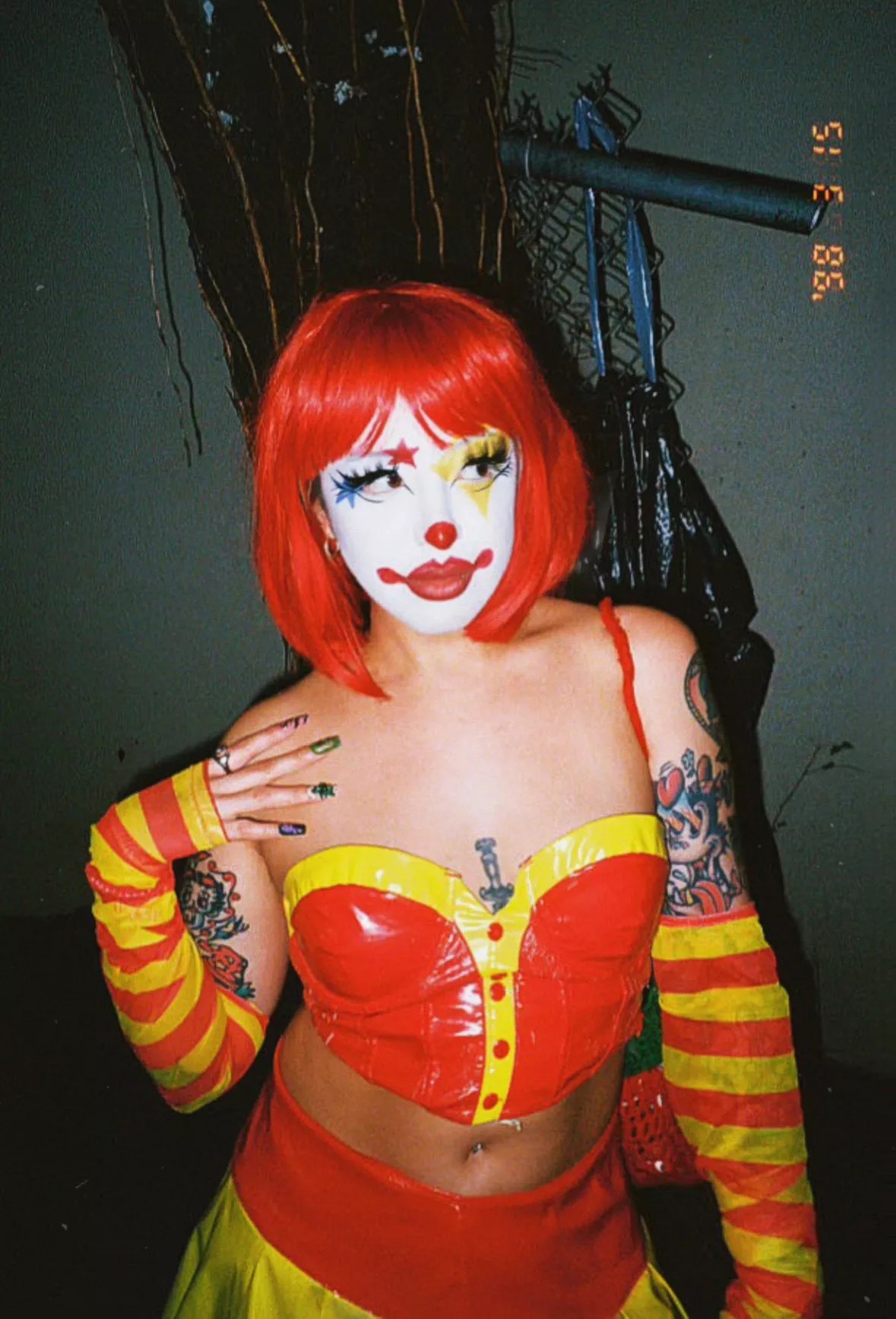
Jacob Torres

Audio By Carbonatix
DJ Alaska doesn’t play about the act of clowning. A breakout star in Dallas-Fort Worth’s DJ scene, the El Paso-born artist brings her true self to her performances with elaborate, striking clown makeup to match her groundshaking rave sets. Folks have readily compared her to HorsegiirL, the German hardcore diva whose equestrian headwear excites an animalistic response from her fans. In a sign of her growing prominence, Alaska opened for HorsegiirL in Austin in May.
Alaska remembers being called a payasa (meaning clown in Spanish) by her mother growing up. The term sits between pointed endearment and playful reprimand. “Ever since I was a kid, I’ve always been kind of a rabble rouser,” Alaska says. “Even though I was, like, supposed to be in trouble, I was like, ‘oh, that’s kind of a vibe.'” For Alaska, being a payasa became a calling card. She soon learned how to apply the red-nose-and-all look with a bright white face and big smile to match. Her look is layered. It begins with a thick white base and hints of rind on the nose, then takes inspiration from the DJ’s outfit of the evening. The whiteface clown look has roots in the Italian commedia dell’arte, reaching us through the American circus performers of previous centuries. Alaska’s looks take cues from drag, peppering this Mediterranean tradition with American traditional tattoos. This includes eye-popping cameos from the Golden Era of American animation, like Felix the Cat and the 1930s beloved character Betty Boop.
And not to forget the music. As a DJ and producer, the multi-hyphenate and multi-modal artist tends to mix Latincore sounds (abstractions and rave interpretations of traditional Latin sounds) with ’80s-inflected goth and emo styles. She plays between the digital hyper-irony of clowncore and the sacramental gothic passions of Latin Catholicism. Be prepared to laugh, groove and possibly be transfigured when she gets on the board. Alaska’s crowd is loyal, growing through small local shows to become a movement. They buy into the visual excess of musician by coming in their own looks. Or, as Alaska puts it: “Where are the other clowns at?”
Will you step up to support Dallas Observer this year?
At the Dallas Observer, we’re small and scrappy — and we make the most of every dollar from our supporters. Right now, we’re $15,250 away from reaching our December 31 goal of $30,000. If you’ve ever learned something new, stayed informed, or felt more connected because of the Dallas Observer, now’s the time to give back.
Alaska joined college as an introverted STEM major. In school, she took classical piano lessons. By the time she reached college, however, Alaska was ready to pursue physics with the dream of becoming an astronaut. After attending a few underground parties, she discovered techno and EDM. Branching outside the music she grew up listening to at home, Alaska slowly began putting on shows by herself. “I want to give a shoutout to Beverly Hills Cowboy [collective] and Machina [nightclub]. Basically, they were kind of the OGs and mostly based in Fort Worth. They had this all techno club, which was basically the only spot to go to. … There wasn’t a lot for true underground Texas techno.”
Eventually, with the support of this community and her discipline, Alaska quit school and was making enough to be a DJ full-time. “I actually didn’t tell my parents for a long time. It’s hard to disappoint your immigrant parents when you’re going to this good school,” she tells the Observer, relaying the very relatable fear of judgment and disavowal from one’s parents for pursuing passion. Thankfully, her parents came around. After she proved her ability to make a living through DJing, “surprisingly, they’ve been pretty accepting of it,” she says.
Alaska’s social media presence bursts with this hyper-irony, connecting with fans through a mixture of authentic daily-in-the-life posts with sardonic memes operating on a level of abstraction to rival any other postmodern aesthete. The aesthetics of girly-pop, Hello Kitty and the best of Y2K girlblog culture collide with attitudes of classic punk, DIY goth and digital decay. Alaska revels in blurring the line between the enchanted and the inane, between sensational and sentimental. It’s no wonder that she connects and cuts through the noise of inauthentic sincerity online by being absolutely and totally her real, weird self.
In recent years, La Payasita has been gaining national recognition. She represented Dallas for Boiler Room’s national tour in October 2024. She also hopes that her work inspires the future DJ generation to be “crazier and wilder than we are now.” As her DJing takes off, Alaska hopes to have more time for her music production career. “I want to take my own music far … maybe I’ll hear my songs on the radio someday.” On a social note: “We need more techno clubs in DFW.”